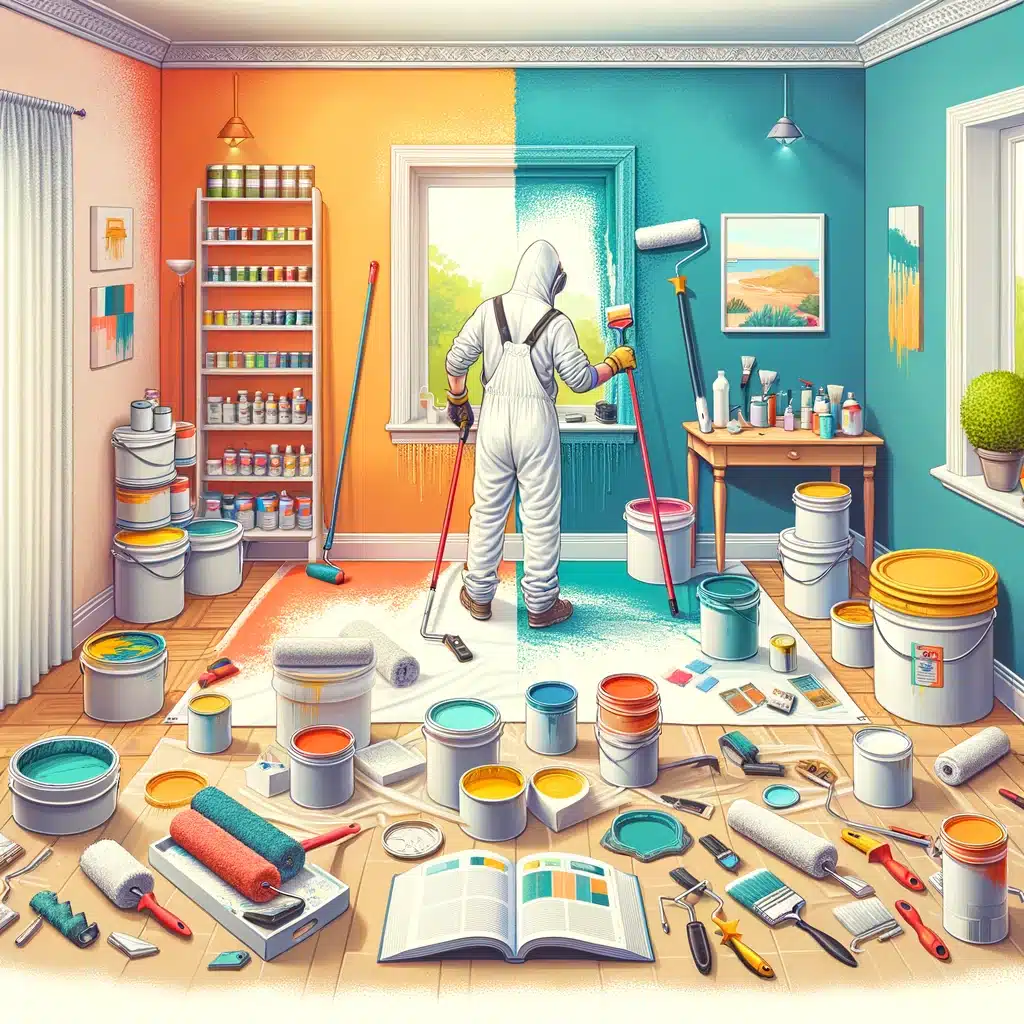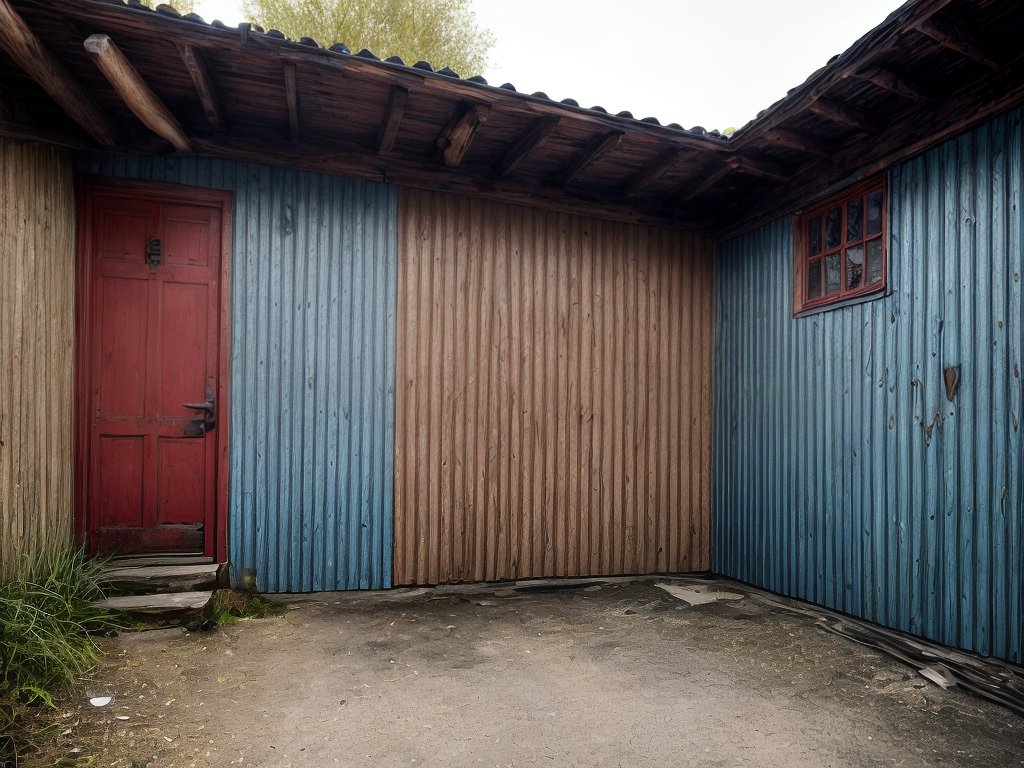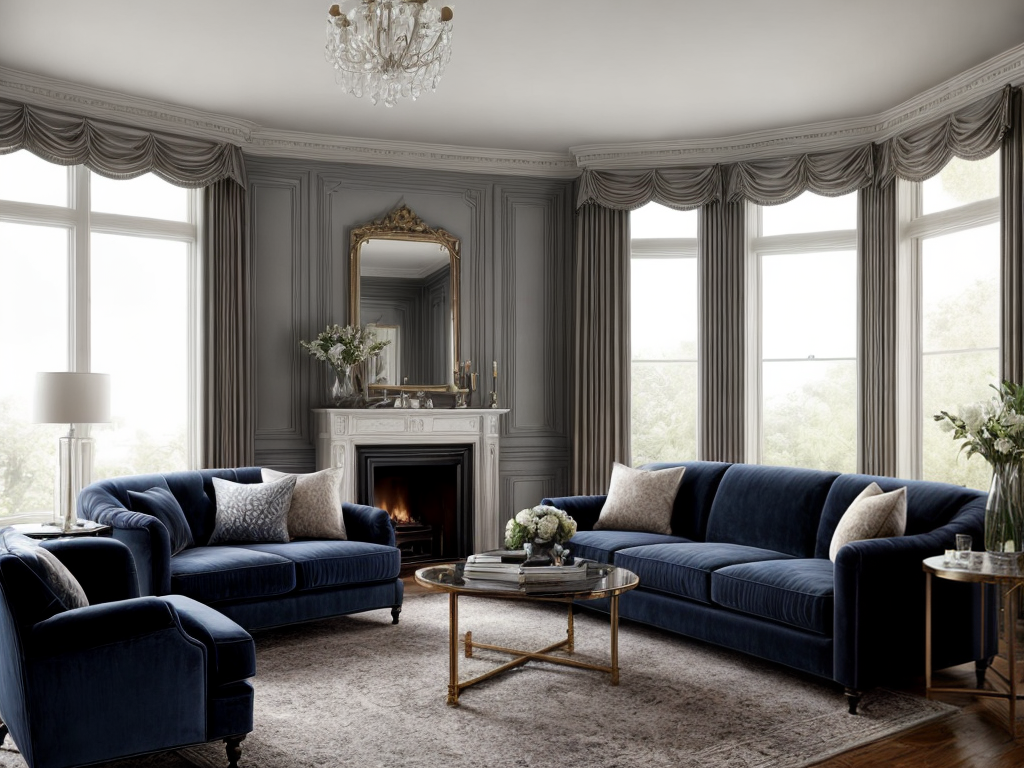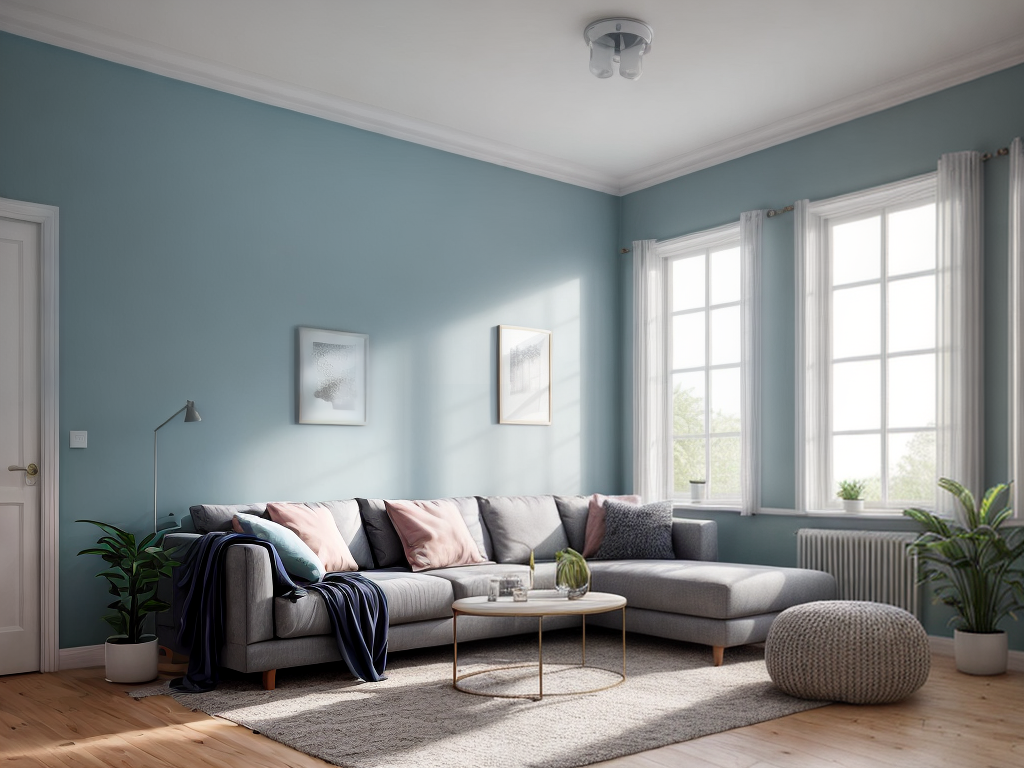Hey there, fellow DIY enthusiasts! Are you ready to take your painting skills to the next level? Look no further than “From Prep to Finish: DIY Painting Like a Pro.” In this handy guide, I’ll walk you through every step of the painting process, from prepping the surfaces to achieving a flawless finish. With easy-to-follow instructions and insider tips, you’ll learn how to choose the right tools, select the perfect paint colors, and master essential painting techniques. Whether you’re a beginner or a seasoned painter, this book is your go-to resource for transforming your space into a work of art. So, let’s dive in and unleash our inner Picasso!
Prepping the Surfaces
First, I gather all the necessary tools and materials to prep the surfaces for painting. This includes sandpaper, sanding block, tack cloth, and a primer. I start by inspecting the surfaces for any imperfections or rough areas. Using sanding techniques like feathering and circular motions, I smooth out the rough spots and create a clean, even surface. It is important to be thorough and remove any loose paint or debris. Once the sanding is complete, I wipe down the surfaces with a tack cloth to remove any remaining dust. Next, I move on to the priming process. I apply a coat of primer to seal and prepare the surfaces for the paint, ensuring better adhesion and a longer-lasting finish.
Choosing the Right Tools
To achieve professional results, I carefully select the appropriate tools for the job. When it comes to painting, having the right painting equipment is crucial. One of the key tools that I pay close attention to is the paint brush. The selection of a paint brush can greatly impact the outcome of the project. For smooth surfaces, I prefer using a synthetic bristle brush as it provides a smooth and even finish. On the other hand, for textured surfaces, I opt for a natural bristle brush as it can reach into the crevices and provide better coverage. Additionally, I ensure that the size of the brush matches the area I am painting. By choosing the right paint brush, I am able to achieve professional and flawless results.
Selecting the Perfect Paint Colors
When it comes to selecting the perfect paint colors, there are a few key points to keep in mind. First, understanding color psychology can help you create the desired atmosphere in each room. Additionally, coordinating colors throughout your home will ensure a cohesive and visually appealing look. Lastly, staying up-to-date on popular paint color trends can give your space a fresh and modern feel.
Color Psychology Explained
In the article, I will explain the psychology behind selecting the perfect paint colors. Color has a significant impact on our mood and emotions. Certain colors can evoke feelings of calmness and relaxation, while others can energize and stimulate us. Understanding the psychology behind each color can help us create the desired atmosphere in our homes. Additionally, color plays a crucial role in marketing and branding. Companies carefully select colors that align with their brand identity and evoke specific emotions in their target audience. For example, red is often associated with excitement and passion, while blue is linked to trust and reliability. By considering the impact of color on mood and emotions, we can make informed choices when selecting paint colors for our homes or businesses.
Tips for Coordinating Colors
Now that I understand the psychology behind selecting the perfect paint colors, it’s time to dive into tips for coordinating colors effectively. When it comes to color coordination, one of the most important things to consider is the use of color schemes. A color scheme is a predetermined selection of colors that work well together and create a harmonious look. There are various color schemes to choose from, such as complementary, analogous, and monochromatic. Complementary color schemes involve using colors that are opposite each other on the color wheel, like blue and orange. Analogous color schemes involve using colors that are next to each other on the color wheel, like blue and green. Monochromatic color schemes involve using different shades and tones of the same color. By understanding and utilizing these color coordination techniques, you can create a visually pleasing and cohesive look in your home.
Popular Paint Color Trends
After learning about coordinating colors, I’ve discovered that staying up-to-date with popular paint color trends is crucial for selecting the perfect paint colors. Paint color trends are constantly evolving, influenced by factors such as fashion, interior design, and color psychology. Being aware of these trends can help homeowners create a modern and stylish look for their space. Currently, some popular paint color trends include muted pastels, earthy tones, and bold jewel tones. Muted pastels like blush pink and soft mint green add a sense of calm and serenity to a room, while earthy tones like terracotta and olive green provide a warm and organic feel. Bold jewel tones like emerald green and sapphire blue create a luxurious and dramatic atmosphere. Understanding the psychology behind colors can also assist in selecting the perfect paint color. For example, blue promotes tranquility, yellow evokes happiness, and green symbolizes growth and renewal. By keeping up with paint color trends and considering color psychology, homeowners can make informed decisions when selecting the perfect paint colors for their space.
Mastering Painting Techniques
When it comes to mastering painting techniques, there are a few key points to keep in mind. First, brushstroke techniques can greatly impact the final look of your painting, so it’s important to practice different strokes and techniques to achieve the desired effect. Additionally, blending and layering colors can add depth and dimension to your artwork, creating a more dynamic and professional finish. By focusing on these points, you can improve your painting skills and create stunning works of art.
Brushstroke Techniques
I’ve mastered a variety of brushstroke techniques that have helped me become a pro at DIY painting. Two techniques that have been particularly useful are dry brushing and feathering. Dry brushing involves using a brush with very little paint and applying it lightly to the surface, creating a textured effect. This technique is great for adding dimension to furniture or creating a weathered look. Feathering techniques, on the other hand, involve using a feather-like stroke to blend different colors together seamlessly. This technique is perfect for creating soft gradients or blending colors on walls. By mastering these brushstroke techniques, I have been able to elevate my DIY painting projects and achieve professional-looking results.
Blending and Layering
To further enhance my DIY painting skills, I have honed my ability to blend and layer paint, mastering various techniques that result in professional-looking finishes. Blending techniques are crucial when trying to achieve smooth transitions between colors. One effective method is wet-on-wet blending, where you apply a new layer of paint while the previous layer is still wet. This allows the colors to mix and create seamless gradients. Another blending technique is dry brushing, which involves using a brush with very little paint to create a subtle texture or blend colors together. Layering is another important aspect of achieving depth and dimension in a painting. By applying multiple thin layers of paint, you can build up colors and create richness. Remember to let each layer dry before adding the next to prevent muddiness. With these blending techniques and layering tips, you can take your DIY painting to the next level and achieve professional-looking results.
Tips for a Smooth Finish
To achieve a smooth finish, start by using a high-quality paint roller. This is essential for achieving even coverage and avoiding streaks. A cheap or low-quality roller can leave behind lint or shed fibers, which can ruin the final result. Look for a roller with a dense nap that is suitable for the type of paint you are using. When applying the paint, use long, even strokes and apply consistent pressure. Avoid pressing too hard, as this can cause the paint to pool or create uneven lines. Additionally, be mindful of the paint’s drying time and avoid going over an area that has already started to dry. By following these tips, you can ensure a smooth and professional-looking finish.
Cleaning up and Maintaining Your Painted Surfaces
For maintaining the smooth finish achieved through proper painting techniques, it is important to establish a routine for cleaning and caring for your painted surfaces. To keep your painted surfaces looking their best, regular cleaning is essential. Dust and dirt can accumulate over time, making the surface appear dull and dirty. Using gentle cleaning techniques, such as wiping with a soft cloth or sponge and using mild soap and water, can help remove any dirt or grime without damaging the paint. It is also important to avoid using abrasive cleaners or scrub brushes, as these can scratch or peel the paint. Additionally, preventing paint peeling can be achieved by avoiding excessive moisture or humidity, as well as protecting the painted surfaces from direct sunlight, which can cause fading and cracking. By following these cleaning and maintenance practices, you can ensure that your painted surfaces stay looking fresh and vibrant for years to come.
Conclusion
In conclusion, DIY painting can be a rewarding and cost-effective way to transform your space. Did you know that a fresh coat of paint can increase the value of your home by up to 5%? By following the steps outlined in this article, you can achieve professional-looking results and enjoy a beautiful and refreshed environment. So grab your brushes and get ready to unleash your inner artist!




